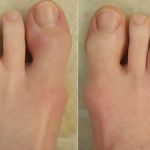 Editor’s note: ACR on Air, the official podcast of the ACR, dives into topics important to the rheumatology community, such as the latest research, solutions for practice management issues, legislative policies, patient care and more. Twice a month, host Jonathan Hausmann, MD, a pediatric and adult rheumatologist in Boston, interviews healthcare professionals and clinicians on the rheumatology front lines. In a series for The Rheumatologist, we provide highlights from these relevant conversations. Listen to the podcast online at acronair.org, or download and subscribe to ACR on Air wherever you get your podcasts. Here we highlight episode 83, “Psoriatic Arthritis,” which aired on Aug. 19, 2024.
Editor’s note: ACR on Air, the official podcast of the ACR, dives into topics important to the rheumatology community, such as the latest research, solutions for practice management issues, legislative policies, patient care and more. Twice a month, host Jonathan Hausmann, MD, a pediatric and adult rheumatologist in Boston, interviews healthcare professionals and clinicians on the rheumatology front lines. In a series for The Rheumatologist, we provide highlights from these relevant conversations. Listen to the podcast online at acronair.org, or download and subscribe to ACR on Air wherever you get your podcasts. Here we highlight episode 83, “Psoriatic Arthritis,” which aired on Aug. 19, 2024.
Diagnosing psoriatic arthritis (PsA) can be a challenge, which means rheumatologists must do some detective work when considering a patient’s signs and symptoms, said Philip J. Mease, MD, MACR. He is director of rheumatology research at the Providence Swedish Medical Center and clinical professor at the University of Washington School of Medicine, Seattle. Dr. Mease sat down with ACR on Air to provide insights into PsA.

Dr. Mease
“It’s true that, oftentimes these days, dermatologists kind of assume that if a person [with psoriasis] complains of pain or some kind of problem of a musculoskeletal nature, they have PsA. … We see patients and try to sort out what different musculoskeletal issues are going on,” said Dr. Mease, who is an ACR Master.
An extra wrinkle is that a person may have more than just one rheumatic condition. They could have PsA in addition to osteoarthritis (OA), fibromyalgia and other conditions. Sorting those symptoms out is part of the rheumatologist’s role.
Some factors Dr. Mease considers include the patient’s age, symptom duration, descriptors used and whether a patient has symptoms consistent with enthesitis, inflammation in which a tendon or ligament inserts into bone. The latter can be important because enthesitis sometimes precedes arthritis.
Another diagnostic clue is the spine and any related symptoms.
“How long does it take the person to get up and about? Do they feel like the Tin Man on The Wizard of Oz first thing and need Judy to come along with her oil can to get going? That’s a strong clue for an inflammatory arthritis condition,” Dr. Mease said.
This stiffness is in contrast with pain that gets worse throughout the day, which could be more consistent with OA, and in contrast with all over aches and fatigue, which could be more consistent with concomitant fibromyalgia.
If the patient’s symptoms are more inflammatory in nature, Dr. Mease will obtain a C-reactive protein (CRP) and/or sedimentation rate, along with possibly an X-ray, ultrasound or magnetic resonance imaging (MRI) assessment.
He also provides feedback to the referring dermatologist.
“Every time you see such a patient, it’s an educational opportunity to advance the understanding of the referring dermatologist about what are the key features of either generalized PsA or components of it, such as axial PsA,” Dr. Mease said.
Enthesitis & Inflammation
Dr. Hausmann asked how to determine when enthesitis is inflammatory, considering that conditions, such as Achilles tendinopathy, are common. One distinguishing factor is if significant trauma has occurred before the onset of an Achilles tendon problem, which could be an alternative explanation for the pain.
“Oftentimes, patients with inflammatory enthesitis will not be able to describe a specific incident, like going hiking with too heavy a backpack or something like that as the etiology of their Achilles or plantar fascia or patellar enthesitis. So it may be spontaneous,” Dr. Mease said.
Another clue is duration. In comparison with symptoms that last for a couple of weeks and that reasonably respond to anti-inflammatory medications, inflammatory enthesitis will endure a lot longer. To distinguish inflammatory enthesitis from traumatic enthesopathy or fibromyalgic enthesalgia, ultrasound or event MRI may be helpful, according to Dr. Mease.
If it’s chest pain, MRI and ultrasound will not be helpful. Instead, Dr. Mease uses a diagnostic Medrol Dosepak.
“If the chest pain just melts away, I have a stronger idea that this could be an inflammatory enthesopathy involving the ligaments of the ribs as opposed to a cracked rib or a mechanical-type costochondral problem,” he said.
Choosing a Treatment
With so many treatments available for PsA, Dr. Mease favors treatment recommendations from the Group for Research and Assessment of Psoriasis and Psoriatic Arthritis. The group has existed for more than 20 years, and members periodically update its treatment recommendations.1
Some treatment considerations include whether the patient has peripheral arthritis, enthesitis, dactylitis and concomitant ulcerative colitis, Crohn’s disease or uveitis.
“All of these things go into the mix in addition to safety factors as we’re thinking about which medicines to bring up for the patient,” Dr. Mease said.
Often, Dr. Mease will discuss different options with patients to get their input on medication decisions. They may also discuss things with the referring dermatologist and then have a quick virtual visit to settle on a medicine. This approach often includes working with a staff member who pursues prior authorization from insurance.
Although a patient may have just one affected digit, that doesn’t necessarily change Dr. Mease’s treatment decision.
“Because even if the patient has a single dactylitic digit, if they happen to be a violinist for the New York Philharmonic, one dactylitic digit is going to have a huge impact on their ability to perform,” he said. “So it’s not so much whether it’s a single or just a couple of digits or joints, but the impact on the patient.”
Precision medicine now and in the future may help reveal why some patients respond to certain types of medications. “We’ve got multiple groups looking for biomarkers that can help steer us,” Dr. Mease said.
This approach will be better than “throwing a dart against the wall” or having insurance steer the patient toward a treatment solely for economic reasons.
When asked about methotrexate in combination with tumor necrosis factor inhibitors for patients with PsA, Dr. Mease said he usually avoids this combination because these patients are often obese, which makes fatty liver and elevated transaminases more common.
“If you add methotrexate to the mix, you can have more liver injury,” he said.
In Dr. Mease’s practice, patients with PsA tend to have good results with biologics, as well as newer targeted oral medications. “Also, we don’t see anti-drug antibody development with some of the newer mechanisms, such as interleukin (IL) 17 and IL-23 inhibitors,” he said.
Some emerging areas of interest include the use of more than one biologic or targeted oral medicine for more refractory patients. Another emerging area of dual therapy is the use of an immunomodulatory medicine along with one of the new weight loss drugs in the GLP-1 receptor agonist group.
“We know that patients who are overweight are less likely to achieve low disease activity or remission with our current treatments. When patients use these drugs, it is not just being a lower weight that is beneficial, but these treatments appear to have a direct beneficial immune moderating effect,” Dr. Mease said.
Multidisciplinary Work
Dr. Mease reminds rheumatologists that it takes a village to treat someone with PsA.
“It’s very important to be able to have a friendly gastroenterologist, dermatologist, ophthalmologist or psychologist down the hallway to work closely with,” he said.
This collaboration may help target inflammatory bowel disease, uveitis or other concomitant issues. This collaboration also becomes important when choosing the right medication mix to prescribe.
Psychologists, physical therapists and other practitioners may be part of the collaboration as well, he added.
Vanessa Caceres is a medical writer in Bradenton, Fla.
Reference
- Coates LC, Soriano ER, Corp N, et al. Group for Research and Assessment of Psoriasis and Psoriatic Arthritis (GRAPPA): Updated treatment recommendations for psoriatic arthritis 2021. Nat Rev Rheumatol. 2022 Aug;18(8):465–479.
More Episodes
A new episode of ACR on Air comes out twice a month. Listen to this full episode and others online at acronair.org. Or download and subscribe wherever you get your podcasts.



